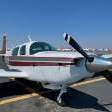Need help identifying part and purpose
-
Members Online
- AndreiC
- Tmooney
- kortopates
- katzhome
- NickG
- Alangj
- Texas Mooney
- squawkvfr
- exM20K
- GMBrown
- GeeBee
- redbaron1982
- hammdo
- Sixstring2k
- Matthew P
- IvanP
- phrogpilot73
- Crawfish
- Fritz1
- takair
- Nstarbf
- hubcap
- Aviationist
- patrickf
- 201Steve
- Ragsf15e
- kaba
- EarthboundMisfit
- ElkoRandy20J
- ericrynehess
- febeg91356
- YuriE
- KLRDMD
- mhrivnak
- cferr59
- toto
- Skyland
- kozmic
- Jose Jo
- 802flyer
- lanejacobs84
- Bob Weber
- Lois
- Planegary


Recommended Posts
Join the conversation
You can post now and register later. If you have an account, sign in now to post with your account.